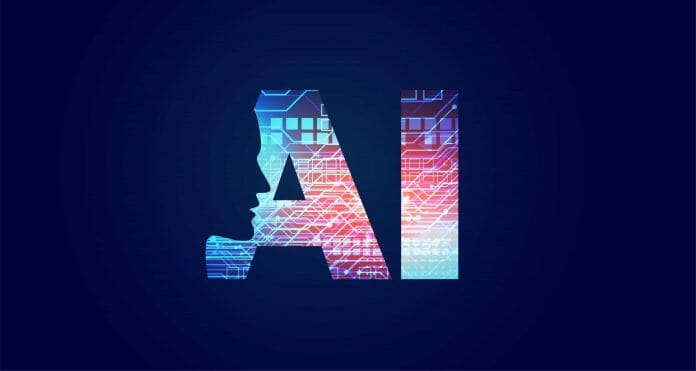Artificial Intelligence (AI) has made significant strides in recent years, with the advent of ChatGPT by OpenAI and Google’s comprehensive AI initiative. Microsoft has also introduced a new feature that allows users to share AI-powered Bing chat responses on social media platforms, including Facebook, Twitter, and Pinterest. This has raised many questions in the education industry, particularly about how AI will transform teaching and learning.
There is growing concern about the impact of AI on various industries, and the education industry is no exception. However, it is important to be aware that the integration of AI into our daily lives is not a new phenomenon. In fact, since 2019, many businesses have made significant strides in adopting AI technology to improve their operations, as reported in a global survey conducted by McKinsey & Company. This raises important questions about how the education industry can also leverage AI to improve learning outcomes for students.
A perspective of the rise of AI in the education industry can be likened to the emergence of ride-sharing services, which began with Uber in 2009 and then led to the founding of Grab between 2012 and 2013. Within a short period, people shifted from taking taxis to using ride-sharing apps, which proved to be a cheaper and better alternative. Today, ridesharing has become a norm, regardless of pricing, in parts of the world where digitization and technology encompass everyday life.
AI has the potential to revolutionize education by automating specific tasks such as setting and marking assessments and creating teaching materials. It can also personalize learning and provide students with tailored feedback, enabling them to learn at their own pace and in their own way. However, it is important to ensure that the use of AI is ethical and responsible, and that it does not reinforce biases or stereotypes which can affect student learning.
With the rise of AI technology, there is growing concern over whether traditional lectures will be replaced. However, it is important to note that the answer is not a one-size-fits-all solution. When it comes to subjects that require hands-on teaching and guidance, AI may not be able to replace the personalized feedback and instruction necessary for students to develop the skills needed to achieve their learning outcomes. Nevertheless, educators must keep a watchful eye on the development of AI and consider the potential impact on future job prospects for their students. This means that institutions of higher learnings of higher learning must consistently study the impact of AI on the jobs they train students for. On the other hand, for modules where traditional lectures are primarily used to impart knowledge and feedback is given after formative assessments, it is possible for these aspects to be automated with some form of AI or other form of technology. However, the implementation of such a structure may prove challenging for some institutions of higher learnings due to limited resources.
To make the most of AI’s potential, institutions of higher learning must establish clear guidelines and rules on ethical AI use and invest in training and teaching programs that develop higher order thinking skills such as critical thinking and problem-solving. This requires a shift in the way we think about education, with a greater emphasis on skills and knowledge that are relevant in the real world combined with developing students’ ability to creatively find solutions based on the skill and knowledge learnt. This also means graduates must be highly knowledgeable in the area of expertise they choose to pursue as well as instruct and evaluate output by AI systems effectively to decide responsibly the accuracy of the output.
Moreover, the use of AI in education raises concerns about privacy, security, and equity. Therefore, a holistic approach to AI governance is necessary, one that considers not only the technical aspects of AI but also its social, economic, and ethical implications. While it is a fact that AI can automate certain tasks, it cannot replace the human touch and empathy that is essential for effective teaching and learning at this point of time. However, whether this status quo will remain the same is doubtful because the developers of AI continuously push boundaries and update their systems. Therefore, institutions of higher learning must consistently continue to develop their staff’s skills and expertise as well as the use of Ai as a tool to assist them in their work and the attainment of the institutions’ objectives for quality education with real world applicable skills of their students.
However, the education industry must not rely solely on AI to address its challenges. While AI can enhance the learning experience for students, it cannot solve all educational issues, such as the quality of education, access to education, and the skills gap in the workforce. Institutions of higher learnings must work to address these issues while incorporating AI as a tool to enhance the learning experience. AI can also be used as a tool to brainstorm, ideate, and simulate solutions towards the best viable outcome.
In conclusion, the emergence of AI in the education industry has raised many questions and concerns about how it will transform teaching and learning. However, the integration of AI into our daily lives is not a new phenomenon, and since 2019, many businesses have made significant strides in adopting AI technology to improve their operations. The current difference is that AI technology has become more accessible to the general public, as opposed to being exclusive to businesses. It’s a modern-day parallel to the myth of Prometheus sharing fire with humanity. Similarly, just like fire, AI can be used for both positive and negative purposes. Therefore, it is up to us to determine how we want to utilize it to benefit society, rather than to bring harm to it.
By Sri Bala Murugan Gogula Nathan, Lecturer, Centre for Commercial Law and Justice, Sunway Business School









